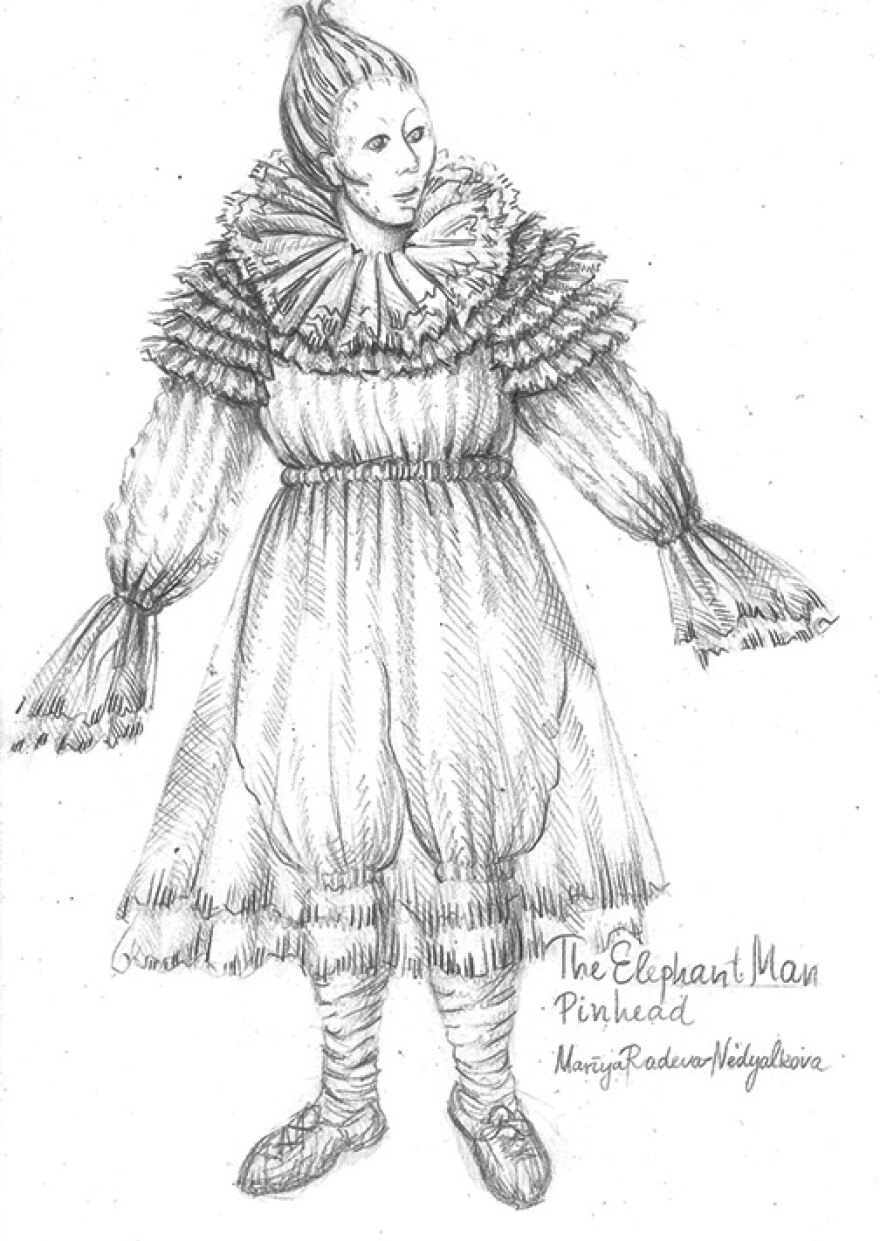A brainy play and a playfully surreal ballet underscore the importance of costume design
Onstage, costumes aren’t merely clothing, they’re character. “Putting costumes on actors doesn’t just mean putting garments on them,” says Mariya Radeva-Nedyalkova, costume designer for theater company A Public Fit. Everything from broad fabric choices to the way a sleeve is cuffed says something about the character: “Everything has meaning.” She’s talking specifically about A Public Fit’s production of The Elephant Man, one of two shows this month — the other is Nevada Ballet Theatre’s Alice (in Wonderland) — that really highlight the creative impact of theatrical costuming.
For Radeva-Nedyalkova, the process begins with her “crucial” emotional and intellectual response to the initial reading of the play — “Often my first response to the script (helps lead) my design approach” — followed by intensive research into every aspect of the character and setting: period details, social climate, politics, the theme of the play.
For The Elephant Man, she settled on a color scheme largely comprising shades of gray, to “emphasize the feeling of limitations” experienced by the main character, Joseph Merrick; she also wants it to set off the faces and hands. This will also focus attention on the choice by director Ann-Marie Pereth to have her lead actor play Merrick without facial prosthetics. The Elephant Man’s disfigurements will be communicated by expressions, acting style, and body language. This requires an act of imagination on the part of the audience, which Radeva-Nedyalkova’s expressionistic approach — painting directly onto the costumes of actors representing the lower classes, while draping the upper classes in detailed, textured fabrics — plays into, as well. And everything has to be easily functional: The production’s seven actors play a total of 18 characters, which means a lot of speedy costume changes.
Lest you think all of this was achieved by mostly reusing clothing from A Public Fit’s prop closet, think again. “APF is a young company,” she says. The prop closet is understuffed. “Maybe less than 5 percent of the costumes and accessories were available in our storage. Everything else was purchased and modified or built from scratch. This is what you learn in theater: The first lesson is being creative.”
In the case of Nevada Ballet’s Alice (in Wonderland), the costumes came with the show, both of which were rented from Ballet Met in Ohio. And they’re sumptuous, detailed, and over the top, as they need to be to convey the necessary surreal atmosphere — particularly when the characters and narrative unfurl in a wordless medium. “You have to have costumes (and makeup) that represent how people perceive certain characters,” says Roy Kaiser, the company’s artistic director. (For nonnarrative works, designers have more leeway.) He gives an example from Alice: the Red Queen. “You don’t like this woman. From the moment you see her, you know she’s a mean woman.” He credits original costume designer Liz Vandal. “From the moment the curtain goes up, (the production) takes us into a different world,” and the costumes are integral to that.
Because of the expense of mounting original or reconceived ballets, rentals are not uncommon, and the costumes and props of shows like The Nutcracker tend to have a lifespan of a decade or more. Still, NBT does mount productions of its own that require Wardrobe Manager Christopher Larson to get creative. “I’m drawn to spectacle,” he says, but admits that some productions require him to “check my costume-extravagance ego at the door.” In the end, it’s all about serving the visions of the shows’ creators. “Costumes (and sets) are the visuals you rely on to tell the story.”
Alice in Wonderland, by Nevada Ballet Theatre, May 3-5, $29-$139, The Smith Center, nevadaballet.org
The Elephant Man, by A Public Fit, May 3-26, $25-$30, The Usual Place, 100 S. Maryland Parkway, apublicfit.org











